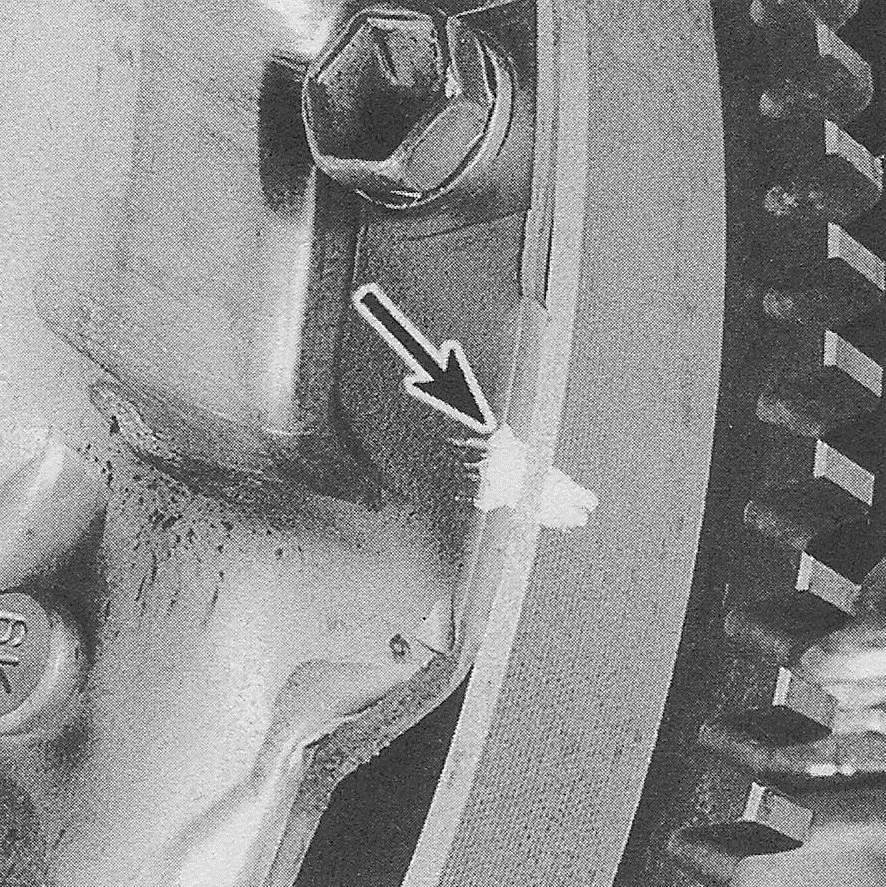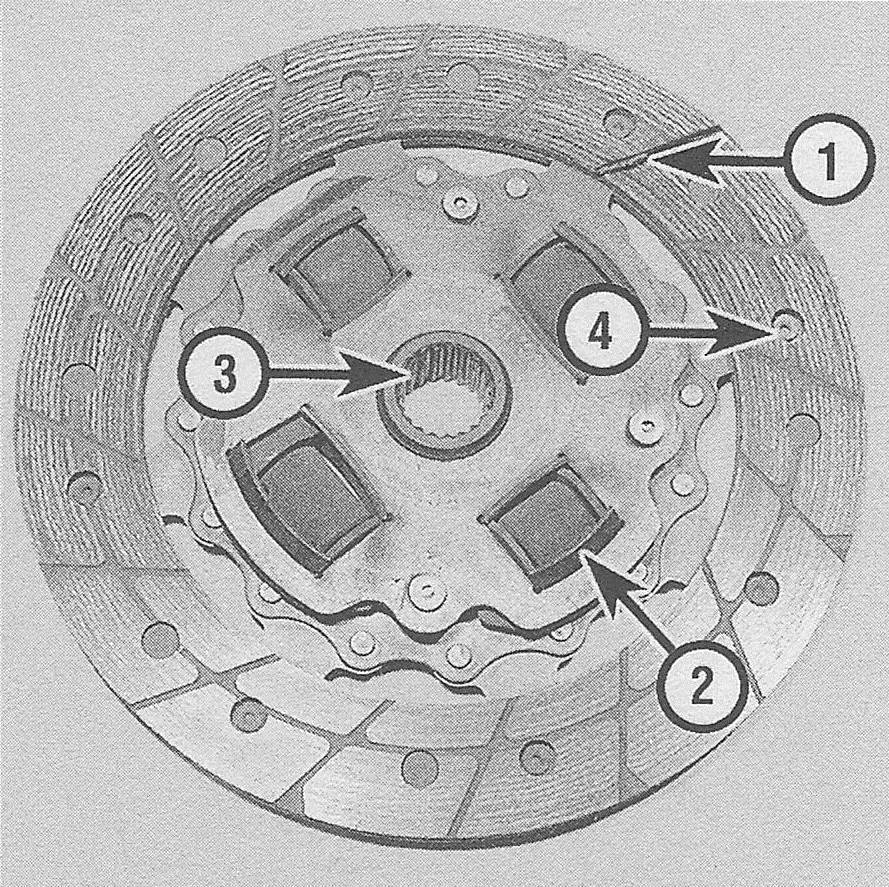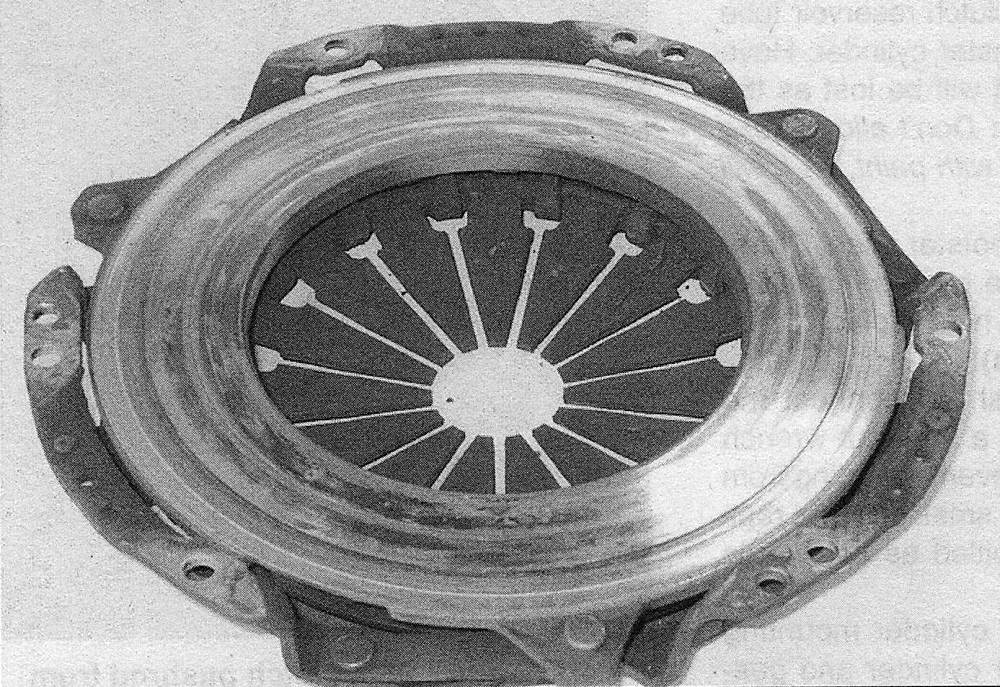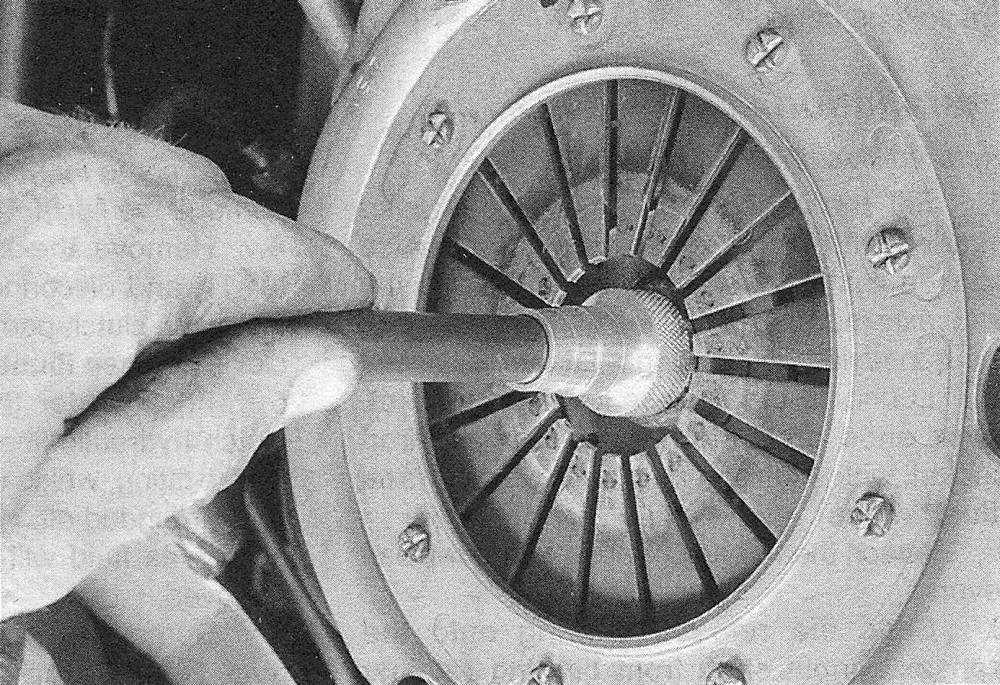Clutch components — removal, inspection and installation
Warning: Dust produced by clutch wear and deposited on clutch components is hazardous to your health. DO NOT blow it out with compressed air and DO NOT inhale it. DO NOT use gasoline or petroleum-based solvents to remove the dust. Brake system cleaner should be used to flush the dust into a drain pan. After the clutch components are wiped clean with a rag, dispose of the contaminated rags and cleaner in a labeled, covered container.
Removal
1. Access to the clutch components is accomplished by removing the transaxle and engine assembly as a unit.
2. Separate the transaxle from the engine (see Manual transaxle). The release fork (2009 and earlier models) and release bearing can remain attached to the transaxle for the time being.
3. To support the clutch disc during removal, install a clutch alignment tool through the clutch disc hub.
4. Carefully inspect the flywheel and pressure plate for indexing marks. The marks are usually an X, a 0 or a white letter. If they cannot be found, scribe marks yourself so the pressure plate and the flywheel will be in the same alignment during installation (see illustration).
3.4 Mark the relationship of the pressure plate to the flywheel (in case you are going to re-use the same pressure plate)

5. Slowly loosen the pressure plate-to-fly wheel bolts. Work in a diagonal pattern and loosen each bolt a little at a time until all spring pressure is relieved. Then hold the pressure plate securely and completely remove the bolts, followed by the pressure plate and clutch disc.
Inspection
6. Ordinarily, when a problem occurs in the clutch, it can be attributed to wear of the clutch driven plate assembly (clutch disc). However, all components should be inspected at this time.
7. Inspect the flywheel for cracks, heat checking, score marks and other damage. If the imperfections are slight, a machine shop can resurface it to make it flat and smooth. Refer to Chapters Four-cylinder engines or V6 engine for the flywheel removal procedure.
8. Inspect the lining on the clutch disc. There should be at least 1/16-inch of lining above the rivet heads. Check for loose rivets, distortion, cracks, broken springs and other obvious damage (see illustration). As mentioned above, ordinarily the clutch disc is replaced as a matter of course, so if in doubt about the condition, replace it with a new one.
3.8 The clutch disc
1 Lining — this will wear down in use
2 Springs or dampers — check for cracking and deformation
3 Splined hub — the splines must not be worn and should slide smoothly on the transaxle input shaft splines
4 Rivets — these secure the lining and will damage the flywheel or pressure plate if allowed to contact the surfaces

9. The release bearing should be replaced along with the clutch disc (see Clutch release bearing and lever — removal, inspection and installation).
10. Check the machined surface and the diaphragm spring fingers of the pressure plate (see illustrations). If the surface is grooved or otherwise damaged, replace the pressure plate assembly. Also check for obvious damage, distortion, cracking, etc. Light glazing can be removed with emery cloth or sandpaper. If a new pressure plate is indicated, new or factory rebuilt units are available.
3.10a Replace the pressure plate if any of these conditions are noted

3.10b Examine the pressure plate friction surface for marks, cracks and evidence of overheating (blue spots)

Installation
11. Before installation, carefully wipe the fly- wheel and pressure plate machined surfaces clean. It’s important that no oil or grease is on these surfaces or the lining of the clutch disc. Handle these parts only with clean hands.
12. Position the clutch disc and pressure plate with the clutch held in place with an alignment tool (see illustration). Make sure it’s installed properly (most replacement clutch plates will be marked «flywheel side» or something similar — if not marked, install the clutch disc with the damper springs or cushion toward the transaxle).
3.12 Center the clutch disc in the pressure plate with a clutch alignment tool

13. Tighten the pressure plate-to-flywheel bolts only finger-tight, working around the pressure plate.
14. Center the clutch disc by ensuring the alignment tool is through the splined hub and into the recess in the crankshaft. Wiggle the tool up, down or side-to-side as needed to bottom the tool. Tighten the pressure plate- to flywheel bolts a little at a time, working in a crisscross pattern to prevent distortion of the cover. After all of the bolts are snug, tighten them to the torque listed in this Chapter’s Specifications. Remove the alignment tool.
15. Using high-temperature grease, lubricate the inner groove of the release bearing (see Clutch release bearing and lever — removal, inspection and installation). Also place grease on the release lever contact areas and the transaxle input-shaft bearing retainer.
16. Install the clutch release bearing (see Clutch release bearing and lever — removal, inspection and installation).
17. Install the transaxle and all components removed previously, tightening all fasteners to the proper torque specifications.